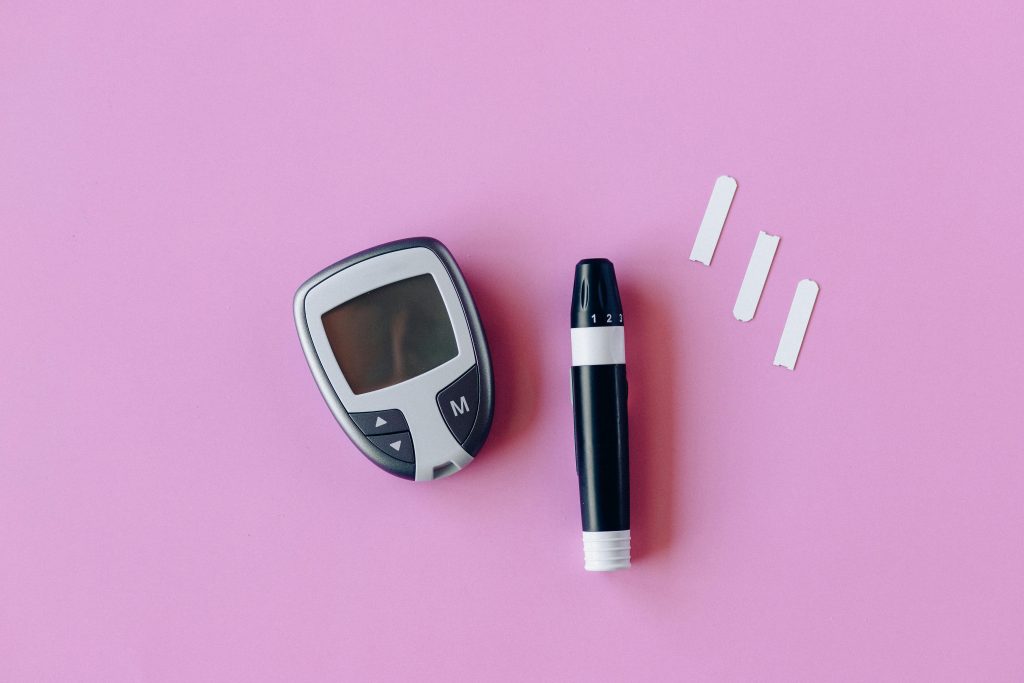Table Of Contents
-
Key Highlights
- What Are Diabetic Test Strips & How Do They Work?
- How to Choose the Right Test Strips for Your Needs
- Best Diabetic Test Strips of 2025: Comparison & Reviews
- Understanding Insurance, Medicare & Saving Money on Test Strips
- Storing, Handling & Using Test Strips Safely
-
Frequently Asked Questions
- New Monitoring Technologies: Where Test Strips Stand
-
Conclusion
-
References
Key Highlights
- Test strip accuracy varies significantly between brands – Clinical studies show some strips perform 20% better than others in real-world conditions
- Medicare covers 100-300 strips monthly depending on insulin usage, but requires proper documentation and approved suppliers
- Expired or counterfeit strips pose serious health risks – FDA warnings highlight dangers of gray-market purchases
- Compatibility is non-negotiable – Test strips must match your specific glucose meter brand and model
- Generic and store-brand options can save 40-60% while maintaining FDA-approved accuracy standards
- Proper storage extends strip lifespan – Humidity and temperature control prevent false readings
- Insurance preferred brands vary widely – Understanding your plan’s formulary can save hundreds annually
What Are Diabetic Test Strips & How Do They Work?
Diabetic test strips are small, disposable biosensors that measure glucose concentration in a tiny blood sample. Each strip contains glucose oxidase or glucose dehydrogenase enzymes that react with glucose in your blood, generating an electrical current proportional to glucose levels. This current is measured by your glucose meter and converted into a blood sugar reading.
The Science Behind Test Strip Technology
Modern blood glucose test strips use electrochemical technology that’s remarkably sophisticated. When you apply a blood drop to the strip, the glucose reacts with enzymes and mediator chemicals, creating electrons that flow to electrodes within the strip. Your meter measures this current within 5-15 seconds and calculates your blood glucose level.
The accuracy of this process depends on several factors including enzyme quality, strip manufacturing consistency, proper storage, and meter calibration. FDA-approved strips must meet strict accuracy standards, typically within ±15% of laboratory plasma glucose values 95% of the time.
FDA Approval and Safety Standards
All legitimate test strips sold in the U.S. must receive FDA clearance through the 510(k) premarket notification process. This ensures they meet safety and effectiveness standards equivalent to already-approved devices. FDA approved glucose meters and their corresponding strips undergo rigorous testing for accuracy, precision, and interference resistance.
 Important Safety Note:
Important Safety Note:
Only use FDA-approved test strips designed for single patient use. Never reuse strips or purchase opened packages, as this violates safety standards and may provide inaccurate readings.
How to Choose the Right Test Strips for Your Needs
Selecting the best diabetic test strips requires balancing multiple factors including insurance coverage, accuracy requirements, ease of use, and cost considerations. The key is developing a systematic approach that prioritizes your most important needs while ensuring clinical reliability.
Essential Decision Factors
Your choice should be based on these critical factors in order of importance:
- Meter Compatibility: Strips must match your glucose meter exactly – brands are not interchangeable
- Insurance Coverage: Check your plan’s preferred brand list to minimize out-of-pocket costs
- Test Strip Accuracy: Review clinical studies and FDA data for performance comparisons
- Testing Frequency: Higher usage justifies investing in more accurate, premium options
- Special Features: Consider alternate site testing, small sample size, or talking meter compatibility
Understanding Your Testing Needs
Your diabetes management plan directly influences strip selection. Type 1 diabetics and insulin-dependent Type 2 diabetics typically need higher accuracy and more frequent testing capability. Those managing diabetes through diet and oral medications may prioritize cost-effectiveness over premium features.
Consider also your physical needs: some strips require smaller blood samples (0.3μL vs 1.0μL), work better for alternate site testing, or offer larger display screens for visual accessibility. Factors affecting test results include finger temperature, blood drop size, and strip handling, so choose options that work with your lifestyle and physical capabilities.
Test Strip Selection Process
Check Insurance Coverage
Verify Meter Compatibility
Compare Accuracy Ratings
Calculate Total Costs
Test Sample Pack
Best Diabetic Test Strips of 2025: Comparison & Reviews
Clinical accuracy studies and real-world performance data reveal significant differences between test strip brands. The NIH’s comparative accuracy study of 17 point-of-care glucose meters provides valuable insights into which OTC glucose test strips deliver the most reliable results.
| Brand | Accuracy Rating | Sample Size | Test Time | Average Cost/Strip | Medicare Coverage |
|---|---|---|---|---|---|
| Contour Next | Excellent (±8%) | 0.6μL | 5 seconds | $0.83 | Preferred |
| OneTouch Verio | Very Good (±12%) | 0.4μL | 5 seconds | $0.91 | Covered |
| Accu-Chek Guide | Very Good (±11%) | 0.6μL | 4 seconds | $0.75 | Preferred |
| FreeStyle Lite | Good (±15%) | 0.3μL | 4 seconds | $0.68 | Covered |
| ReliOn Confirm | Good (±14%) | 0.7μL | 7 seconds | $0.42 | Limited |
Top-Performing Brands Analysis
Contour Next strips consistently rank highest in independent accuracy studies, with 99% of results falling within ±15% of laboratory values. Their “Second-Chance” sampling feature allows adding more blood if the initial sample is insufficient, reducing waste and improving user experience.
OneTouch Verio strips offer the smallest sample size requirement and fastest testing time, making them ideal for frequent testers. The ColorSure technology provides visual confirmation of adequate sample size, reducing user error.
For budget-conscious users, affordable diabetic test strips like ReliOn Confirm provide FDA-approved accuracy at nearly half the cost of premium brands. While slightly less precise, they meet clinical standards for diabetes management when used correctly.
Clinical Accuracy Insights
Recent comparative studies show that accuracy varies not just between brands, but also within manufacturing batches of the same brand. The most reliable performers maintain consistency across different environmental conditions, blood glucose levels, and user handling variations.
When evaluating test strip accuracy, consider that all FDA-approved strips meet minimum standards, but some exceed requirements significantly. For tight glucose control or frequent testing, investing in higher-accuracy options can improve overall diabetes management outcomes.
Understanding Insurance, Medicare & Saving Money on Test Strips
Navigating insurance coverage for test strips requires understanding formularies, quantity limits, and prior authorization requirements. Medicare diabetic test strip coverage follows specific guidelines that can significantly impact your out-of-pocket costs if you’re not properly informed.
Medicare Coverage Essentials
Medicare Part B covers test strips as durable medical equipment when you meet specific criteria. Coverage includes:
- 100 strips per month for non-insulin users with diabetes
- 300 strips per month for insulin-dependent diabetics
- Additional strips with doctor’s justification for intensive management
- Coverage limited to Medicare-approved suppliers and brands
To qualify for maximum coverage, you need a prescription for test strips from your healthcare provider specifying testing frequency and medical necessity. Your doctor must document that you’re capable of self-testing and will use results for diabetes management decisions.
Private Insurance Navigation
Most private insurance plans maintain preferred brand formularies that offer lower copays for specific test strip brands. Common strategies include:
- Review your plan’s preferred drug list annually during open enrollment
- Ask your doctor to prescribe preferred brands when clinically appropriate
- Request prior authorization for non-preferred brands if medically necessary
- Consider switching meters to access better-covered strip brands
Cost-Saving Strategies
Beyond insurance optimization, several strategies can reduce your test strip expenses:
- Manufacturer programs: Many brands offer discount cards reducing costs by 30-75%
- Bulk purchasing: 90-day supplies often provide per-strip savings
- Store brands: Generic options like ReliOn can cut costs by 50% or more
- Online pharmacies: Licensed mail-order suppliers often offer competitive pricing
- Patient assistance programs: Income-based programs for qualifying individuals
 Avoid These Dangerous Cost-Cutting Measures:
Avoid These Dangerous Cost-Cutting Measures:
Never purchase opened packages, expired strips, or “pre-owned” supplies from online marketplaces. These products may be counterfeit, contaminated, or damaged, leading to inaccurate readings and health risks.
Storing, Handling & Using Test Strips Safely
Proper storage and handling practices are crucial for maintaining test strip expiration integrity and ensuring accurate results. Environmental factors like humidity, temperature, and light exposure can significantly impact strip performance and reliability.
Optimal Storage Conditions
Test strips require controlled environmental conditions to maintain accuracy:
- Temperature: Store between 36-86°F (2-30°C) – avoid car glove compartments and direct sunlight
- Humidity: Keep in original container with desiccant – bathrooms and kitchens are poor storage locations
- Light protection: Original packaging blocks harmful UV exposure that degrades enzymes
- Container integrity: Always close lid tightly immediately after removing a strip
Safe Handling Practices
Follow CDC recommendations for safe test strip usage:
- Wash hands thoroughly before testing – soap residue can affect readings
- Use each strip only once – single patient use prevents contamination and infection
- Check expiration dates before each use – expired strips lose accuracy
- Handle strips by edges only – avoid touching the testing area
- Insert strips immediately before testing – prolonged exposure to air degrades performance
Troubleshooting Common Issues
Understanding factors affecting test results helps identify when readings may be unreliable:
- Consistently high or low readings: Check meter calibration with control solution
- Error messages: Verify strip compatibility and proper insertion technique
- Unusual readings: Confirm hands are clean and sample size is adequate
- Storage issues: Replace containers exposed to extreme conditions
Frequently Asked Questions
Test strips are brand-specific and must match your glucose meter exactly. Check your meter’s model number and only purchase strips designed for that specific device. Never mix different brands or attempt to use generic strips with branded meters unless explicitly compatible.
Many generic test strips meet the same FDA accuracy standards as brand-name options. Brands like ReliOn (Walmart) and True Metrix perform well in clinical studies while costing 40-60% less. Always verify FDA approval and review independent accuracy data before switching.
Medicare typically covers 100 strips monthly for non-insulin users and 300 strips monthly for insulin-dependent diabetics. Additional strips may be covered with proper medical documentation. You must use Medicare-approved suppliers and have a valid prescription.
Expired strips can provide inaccurate readings as enzymes degrade over time. Resold or “gray market” strips may be contaminated, improperly stored, or counterfeit. The FDA warns these products pose serious health risks and may not meet safety standards.
Variation occurs due to different calibration methods, enzyme types, and manufacturing tolerances. FDA allows ±15% variation from laboratory values. Factors like sample size, finger temperature, and strip storage also affect readings. Consistent variation suggests meter calibration issues.
Never reuse or share test strips. They’re designed for single-patient use only. Reusing creates infection risks and provides inaccurate readings. Sharing strips between people violates safety protocols and can transmit bloodborne pathogens.
Keep strips in their original container with the lid tightly closed. Store at room temperature away from heat, humidity, and direct sunlight. Avoid bathrooms and cars. Check expiration dates regularly and discard expired strips immediately.
New Monitoring Technologies: Where Test Strips Stand
While continuous glucose monitoring (CGM) and flash glucose systems represent exciting advances in diabetes technology, traditional test strips remain essential for most people with diabetes. Understanding the relationship between these technologies helps inform your monitoring strategy.
CGM vs. Test Strip Comparison
The difference between test strips and CGM extends beyond convenience to fundamental measurement approaches:
- Test strips measure capillary blood glucose – providing real-time blood sugar levels
- CGMs measure interstitial fluid glucose – showing trends with 10-15 minute delays
- Test strips require active testing – you control when and how often to check
- CGMs provide continuous data – automatic readings every few minutes with alerts
Integration and Calibration Needs
Even advanced CGM systems rely on test strips for initial calibration and verification. FDA guidelines recommend confirming CGM readings with fingerstick tests before making treatment decisions, especially when readings don’t match symptoms or during rapid glucose changes.
For most people with diabetes, test strips remain the gold standard for accurate glucose measurement, while CGMs excel at tracking trends and providing alerts for dangerous glucose levels.
Conclusion
Choosing the right diabetic test strips is a critical decision that impacts both your health outcomes and financial well-being. The key is balancing accuracy, insurance coverage, and cost while ensuring compatibility with your glucose meter and lifestyle needs.
Remember that the best diabetic test strips for you may not be the most expensive or technologically advanced options. Focus on FDA-approved strips that work with your insurance plan, provide reliable accuracy for your testing frequency, and fit within your budget for long-term sustainability.
Start by reviewing your insurance coverage and preferred brand lists, then work with your healthcare provider to identify strips that meet your clinical needs. Consider trying sample packs of different brands to find options that work well with your testing routine and physical requirements.
Most importantly, never compromise on safety by purchasing questionable strips from unauthorized sources. The small savings aren’t worth the health risks associated with counterfeit or improperly stored products. Invest in your health by choosing reliable, FDA-approved test strips from legitimate suppliers.
Take action today: Review your current test strip costs, check your insurance formulary, and discuss options with your healthcare provider. Your diabetes management success depends on having reliable, accurate monitoring tools that you can afford to use consistently.
References
- FDA. “Blood Glucose Monitoring Devices.” https://www.fda.gov/medical-devices/in-vitro-diagnostics/blood-glucose-monitoring-devices
- CDC. “Monitoring Your Blood Sugar.” https://www.cdc.gov/diabetes/diabetes-testing/monitoring-blood-sugar.html
- Medicare. “Medicare Coverage of Diabetes Supplies, Services and Prevention Programs.” https://www.medicare.gov/publications/11022-medicare-coverage-of-diabetes-supplies-services-and-prevention-programs.pdf
- NIH/PMC. “Comparative Accuracy of 17 Point-of-Care Glucose Meters.” https://pmc.ncbi.nlm.nih.gov/articles/PMC5505415/
- Oklahoma Department of Health. “Diabetic Supplies for Pharmacy.” https://oklahoma.gov/ohca/providers/types/pharmacy/diabetic-supplies-for-pharmacy.html
- StatPearls. “Self-Monitoring of Blood Glucose.” https://www.ncbi.nlm.nih.gov/books/NBK555976/
- MedlinePlus. “Home Blood Sugar Testing.” https://medlineplus.gov/ency/patientinstructions/000324.htm
- CMS. “Medicare Coverage Database.” https://www.cms.gov/medicare-coverage-database/view/article.aspx?articleId=52464
- PubMed. “Strip Brand Accuracy Comparison Study.” https://pubmed.ncbi.nlm.nih.gov/8586008/
- PMC. “Environmental Storage Warnings and Technical Challenges.” https://pmc.ncbi.nlm.nih.gov/articles/PMC2769957/
Disclaimer:
The information provided on MD-Pilot is for educational and informational purposes only. It is not intended as a substitute for professional medical advice, diagnosis, or treatment. Always seek the advice of your physician or other qualified healthcare provider with any questions you may have regarding a medical condition. Never disregard professional medical advice or delay in seeking it because of something you have read on this website.
Recomended Articles
View AllWeekly Health Intel
Get evidence-based health tips, latest research, and exclusive guides delivered weekly




